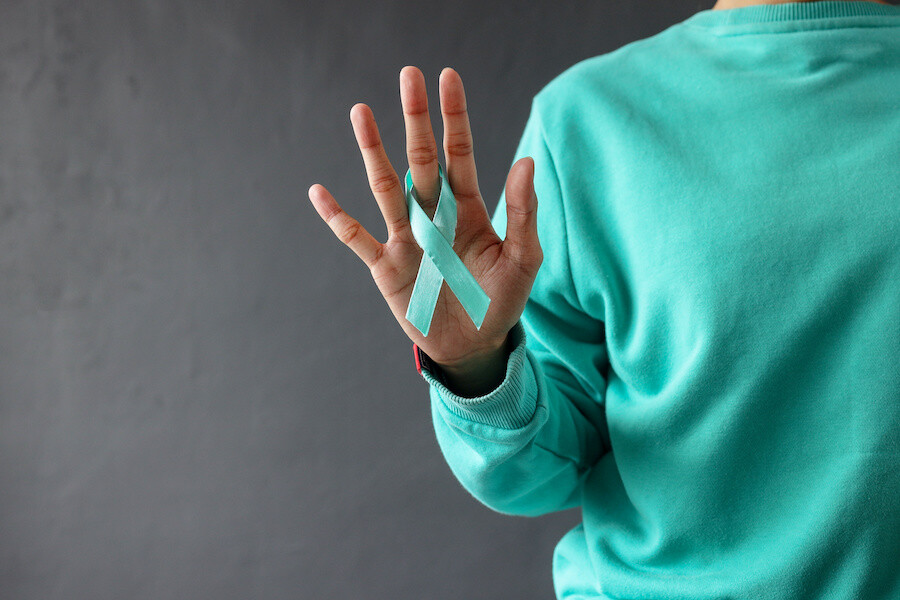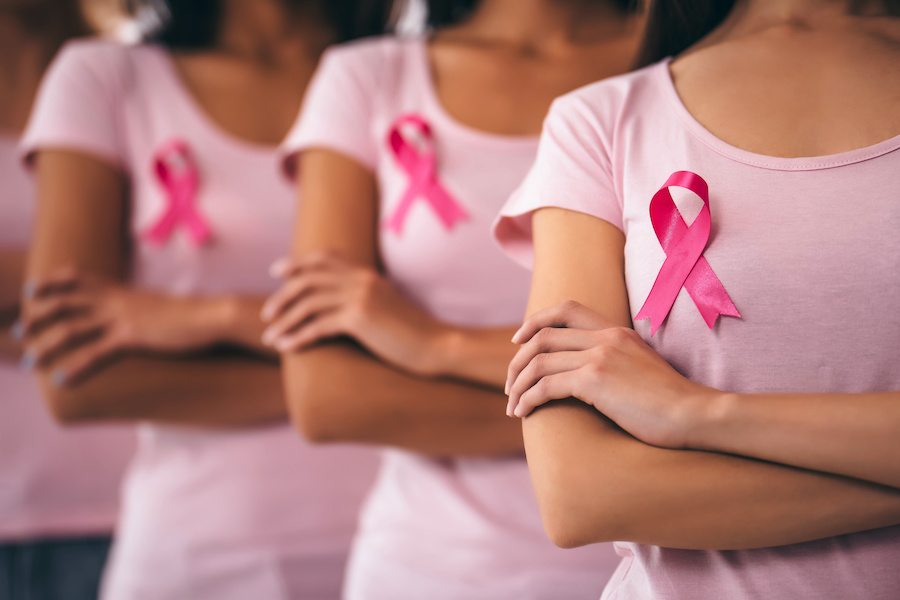January marks National Cervical Cancer Awareness Month. The American Cancer Society estimated there will have been about 13,960 new cases of invasive cancer diagnosed, and about 4,310 women will have died from cervical cancer in 2023. The 2020 CDC data for Connecticut shows there were 96 cases reported, equaling a cervical cancer rate of 4.8 per 100,000 women.
Anyone with a cervix is at risk for cervical cancer, increasing in people over the age of 30. Certain types of HPV are the main cause of cervical cancer. Screening tests and the HPV vaccine can help reduce the risk of cervical cancer. Click here to see more information about cervical cancer risk.
What is cervical cancer?
Cervical cancer starts in the cells lining the cervix — the lower part of the uterus (womb).
The cervix connects the body of the uterus (the upper part where a fetus grows) to the vagina (birth canal). Cancer starts when cells in the body begin to grow out of control.
The cervix is made of two parts and is covered with two different types of cells.
- The endocervix is the opening of the cervix that leads into the uterus. It is covered with glandular cells.
- The exocervix (or ectocervix) is the outer part of the cervix that can be seen by the doctor during a speculum exam. It is covered in squamous cells.
The place where these two cell types meet in the cervix is called the transformation zone. The exact location of the transformation zone changes as you get older and if you give birth. Most cervical cancers begin in the cells in the transformation zone.
Cervical Cancer Symptoms
Cervical cancer may not present with signs or symptoms in its early stages. Advanced cervical can cause bleeding or discharge from the vagina that is not normal for you. The best way to reduce risk is to see your doctor regularly, comply with screening recommendations, and report anything to your doctor that is not normal for you. See the attached documents for more detailed information.
Types of Treatment
If you are diagnosed with cervical cancer, you will be referred to a gynecologic oncologist to develop a treatment plan. Cervical cancer is treated in several ways. It depends on the kind of cervical cancer and how far it has spread. Treatments include surgery, chemotherapy, and radiation therapy.
- Surgery: Doctors remove cancer tissue in an operation.
- Chemotherapy: Using special medicines to shrink or kill the cancer. The drugs can be pills you take or medicines given in your veins, or sometimes both.
- Radiation: Using high-energy rays (similar to X-rays) to kill the cancer.
Insurance and Income: For those who are concerned they cannot afford care
Screening and treatment are covered under most insurance policies. But what if you, or someone you know, is uninsured or underinsured and cannot afford care? In Connecticut, the DPH has the Connecticut Early Detection & Prevention Program (CEDPP).
The CEDPP is an integrated program that brings breast and cervical cancer screening together with the WISEWOMAN, Colorectal Cancer, and Comprehensive Cancer programs, which helps promote healthy lifestyles for Connecticut Residents in order to decrease breast, cervical, and colorectal cancers, heart disease, hypertension, and other avoidable diseases. If you, or someone you know, needs to receive screening but cannot afford it, please go to the Early Detection and Prevention Program website to determine eligibility.

